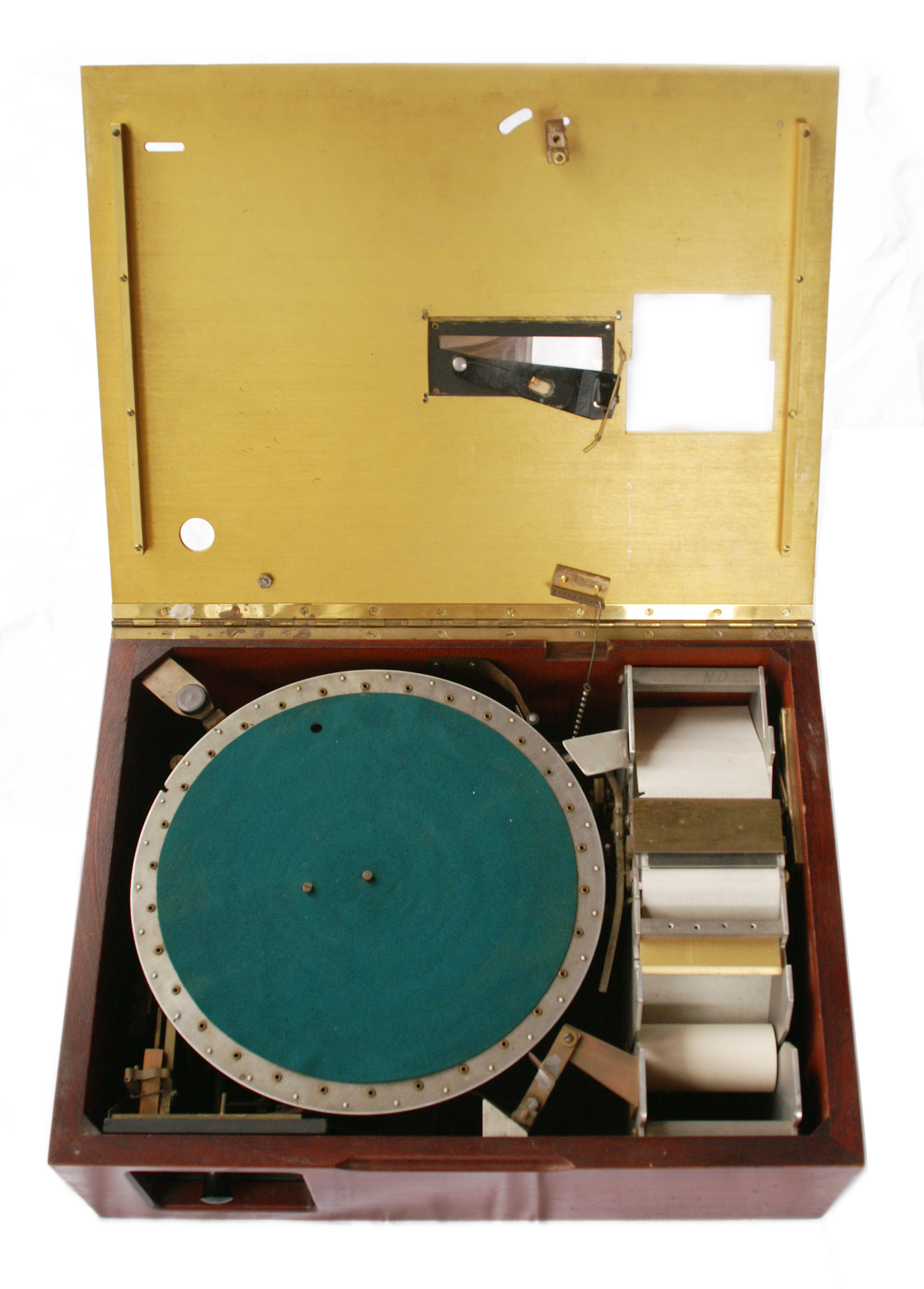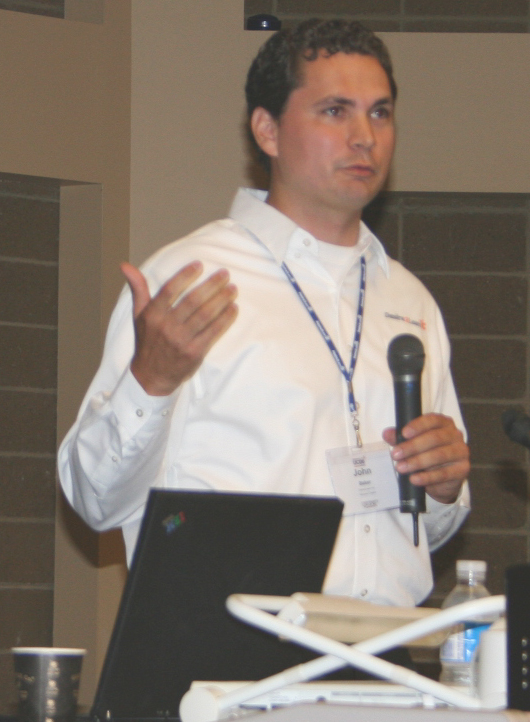|
Learning Object
A learning object is "a collection of content items, practice items, and assessment items that are combined based on a single learning objective". The term is credited to Wayne Hodgins, and dates from a working group in 1994 bearing the name. The concept encompassed by 'Learning Objects' is known by numerous other terms, including: content objects, chunks, educational objects, information objects, intelligent objects, knowledge bits, knowledge objects, learning components, media objects, reusable curriculum components, nuggets, reusable information objects, reusable learning objects, testable reusable units of cognition, training components, and units of learning. The core idea of the use of learning objects is characterized by the following: discoverability, reusability, and interoperability. To support discoverability, learning objects are described by Learning Object Metadata, formalized as IEEE 1484.12 Learning object metadata. To support reusability, the IMS Consortium proposed ... [...More Info...] [...Related Items...] OR: [Wikipedia] [Google] [Baidu] |
Learning Objective
Although the noun forms of the three words ''aim'', ''objective'' and ''goal'' are often used synonymously, professionals in organised education define the educational ''aims'' and ''objectives'' more narrowly and consider them to be distinct from each other: aims are concerned with purpose whereas objectives are concerned with achievement. Usually an educational objective relates to gaining an ability, a skill, some knowledge, a new attitude etc. rather than having merely completed a given task. Since the achievement of objectives usually takes place during the course and the aims look forward into the student's career and life beyond the course one can expect the aims of a course to be relatively more long term than the objectives of that same course. Course objectives are a relatively shorter term goal which successful learners will achieve within the scope of the course itself. Objectives are often worded in course documentation in a way that explains to learners what they sh ... [...More Info...] [...Related Items...] OR: [Wikipedia] [Google] [Baidu] |
SCORM
Sharable Content Object Reference Model (SCORM) is a collection of standards and specifications for web-based electronic educational technology (also called e-learning). It defines communications between client side content and a host system (called "the run-time environment"), which is commonly supported by a learning management system. SCORM also defines how content may be packaged into a transferable ZIP file called "Package Interchange Format." SCORM is a specification of the Advanced Distributed Learning (ADL) Initiative from the Office of the United States Secretary of Defense. SCORM 2004 introduced a complex idea called sequencing, which is a set of rules that specifies the order in which a learner may experience content objects. In simple terms, they constrain a learner to a fixed set of paths through the training material, permit the learner to "bookmark" their progress when taking breaks, and assure the acceptability of test scores achieved by the learner. The standa ... [...More Info...] [...Related Items...] OR: [Wikipedia] [Google] [Baidu] |
Data Management
Data management comprises all disciplines related to handling data as a valuable resource, it is the practice of managing an organization's data so it can be analyzed for decision making. Concept The concept of data management emerged alongside the evolution of computing technology. In the 1950s, as computers became more prevalent, organizations began to grapple with the challenge of organizing and storing data efficiently. Early methods relied on punch cards and manual sorting, which were labor-intensive and prone to errors. The introduction of database management systems in the 1970s marked a significant milestone, enabling structured storage and retrieval of data. By the 1980s, relational database models revolutionized data management, emphasizing the importance of data as an asset and fostering a data-centric mindset in business. This era also saw the rise of data governance practices, which prioritized the organization and regulation of data to ensure quality and complian ... [...More Info...] [...Related Items...] OR: [Wikipedia] [Google] [Baidu] |
Serious Games
A serious game or applied game is a game designed for a primary purpose other than pure entertainment. The "serious" adjective is generally prepended to refer to video games used by industries like defense, education, scientific exploration, health care, emergency management, city planning, engineering, politics and art. Serious games are a subgenre of serious storytelling, where storytelling is applied "outside the context of entertainment, where the narration progresses as a sequence of patterns impressive in quality ... and is part of a thoughtful progress". The idea shares aspects with simulation generally, including flight simulation and medical simulation, but explicitly emphasizes the added pedagogical value of fun and competition. History The use of games in educational circles has been practiced since at least the twentieth century. For example, Lizzie Magie created a game called '' The Landlord's Game'', a predecessor of Monopoly, in 1903. Use of paper-based edu ... [...More Info...] [...Related Items...] OR: [Wikipedia] [Google] [Baidu] |
North Carolina Learning Object Repository (NCLOR)
The North Carolina Learning Object Repository (NCLOR) is a service offered by the North Carolina Community College System (NCCCS), that provides a central location to manage, collect, contribute, and share digital learning resources for use in traditional or distance learning environments.{{Cite web, url=https://www.nccommunitycolleges.edu/it-resources-and-services/vlc-tools-and-resources/learning-technology-resources, title=Learning Technology Resources: List of North Carolina Community College System Wide Learning Technology Resources., last=, first=, date=2017-08-09, website=NC Community Colleges, language=en, archive-url=, archive-date=, access-date=2019-02-05 The NCLOR is available to all K-20 teachers across the state and provide vendor and peer resources for users. NCLOR participants include the 58 colleges from the North Carolina Community College System (NCCCS), University of North Carolina (UNC) System, North Carolina Independent Colleges and Universities (36 private ins ... [...More Info...] [...Related Items...] OR: [Wikipedia] [Google] [Baidu] |
Intelligent Tutoring System
An intelligent tutoring system (ITS) is a computer system that imitates human tutors and aims to provide immediate and customized instruction or feedback to learners, usually without requiring intervention from a human teacher. ITSs have the common goal of enabling learning in a meaningful and effective manner by using a variety of computing technologies. There are many examples of ITSs being used in both formal education and professional settings in which they have demonstrated their capabilities and limitations. There is a close relationship between intelligent tutoring, cognitive learning theories and design; and there is ongoing research to improve the effectiveness of ITS. An ITS typically aims to replicate the demonstrated benefits of one-to-one, personalized tutoring, in contexts where students would otherwise have access to one-to-many instruction from a single teacher (e.g., classroom lectures), or no teacher at all (e.g., online homework). ITSs are often designed with t ... [...More Info...] [...Related Items...] OR: [Wikipedia] [Google] [Baidu] |
Instructional Materials
Instructional materials, also known as teaching materials, learning materials, or teaching/learning materials (TLM), are any collection of materials including animate and inanimate objects and human and non-human resources that a teacher may use in teaching and learning situations to help achieve desired learning objectives. Instructional materials may aid a student in concretizing a learning experience so as to make learning more exciting, interesting and interactive. They are tools used in instructional activities, which include active learning and assessment. The term encompasses all the materials and physical means an instructor might use to implement instruction and facilitate students achievement of instructional objectives. Background The value of instructional materials as a pedagogical aid can be seen in Vachel Lindsay's poem "Euclid": Types of instructional materials Instructional materials can be classified by type, including print, visual, and audiovisual, amon ... [...More Info...] [...Related Items...] OR: [Wikipedia] [Google] [Baidu] |
Chemical Markup Language
Chemical Markup Language (ChemML or CML) is an approach to managing molecular information using tools such as XML and Java. It was the first domain specific implementation based strictly on XML, first based on a DTD and later on an XML Schema, the most robust and widely used system for precise information management in many areas. It has been developed over more than a decade by Murray-Rust, Rzepa and others and has been tested in many areas and on a variety of machines. Chemical information is traditionally stored in many different file types which inhibit reuse of the documents. CML uses XML's portability to help CML developers and chemists design interoperable documents. There are a number of tools that can generate, process and view CML documents. Publishers can distribute chemistry within XML documents by using CML, e.g. in RSS documents. CML is capable of supporting a wide range of chemical concepts including: * molecules * reactions * spectra and analytical data * compu ... [...More Info...] [...Related Items...] OR: [Wikipedia] [Google] [Baidu] |
MathML
Mathematical Markup Language (MathML) is a pair of mathematical markup languages, an application of XML for describing mathematical notations and capturing both its structure and content. Its aim is to natively integrate mathematical formulae into World Wide Web pages and other documents. It is part of HTML5 and standardised by ISO/IEC since 2015. History Following some experiments in the Arena browser based on proposals for mathematical markup in HTML, MathML 1 was released as a W3C recommendation in April 1998 as the first XML language to be recommended by the W3C. Version 1.01 of the format was released in July 1999 and version 2.0 appeared in February 2001. Implementations of the specification appeared in Amaya 1.1, Mozilla 1.0 and Opera 9.5. In October 2003, the second edition of MathML Version 2.0 was published as the final release by the W3C Math Working Group. MathML was originally designed before the finalization of XML namespaces. However, it was assigned a ... [...More Info...] [...Related Items...] OR: [Wikipedia] [Google] [Baidu] |
Desire2Learn
D2L (or Desire2Learn) is a Canada-based global software company with offices in Australia, Brazil, Europe, India, Singapore, and the United States. D2L is the developer of the Brightspace learning management system, a cloud-based software suite used by schools, higher educational institutions, and businesses for online and blended classroom learning. The company is also the developer of Open Courses, a Massive Open Online Course platform. History D2L was founded in 1999 by Canadian John Baker, who became president and CEO. He founded D2L while studying systems design engineering during his third year at the University of Waterloo. He was awarded the Meritorious Service Cross in 2017, for his work at the company to advance learning across the country and around the world. D2L raised $80 million in Series A funding, one of the largest tech funding rounds in Canada at the time, to expand its product offerings and grow internationally. The company went public with an initia ... [...More Info...] [...Related Items...] OR: [Wikipedia] [Google] [Baidu] |
Moodle
Moodle ( ) is a free and open-source learning management system written in PHP and distributed under the GNU General Public License. Moodle is used for blended learning, distance education, flipped classroom and other online learning projects in schools, universities, workplaces and other sectors. Moodle is used to create custom websites with online courses and allows for community-sourced plugins. Overview Moodle was originally developed by Martin Dougiamas to help educators and scholars create online courses and focus on interaction and collaborative construction of content. The first version of Moodle was released on , and it continues to be actively developed. The Moodle Project is led and coordinated by Moodle HQ, an Australian company, that is financially supported by a network of eighty Moodle Partner service companies worldwide. Development is also assisted by the open-source community. Moodle is a learning platform used to augment and move existing learning en ... [...More Info...] [...Related Items...] OR: [Wikipedia] [Google] [Baidu] |




